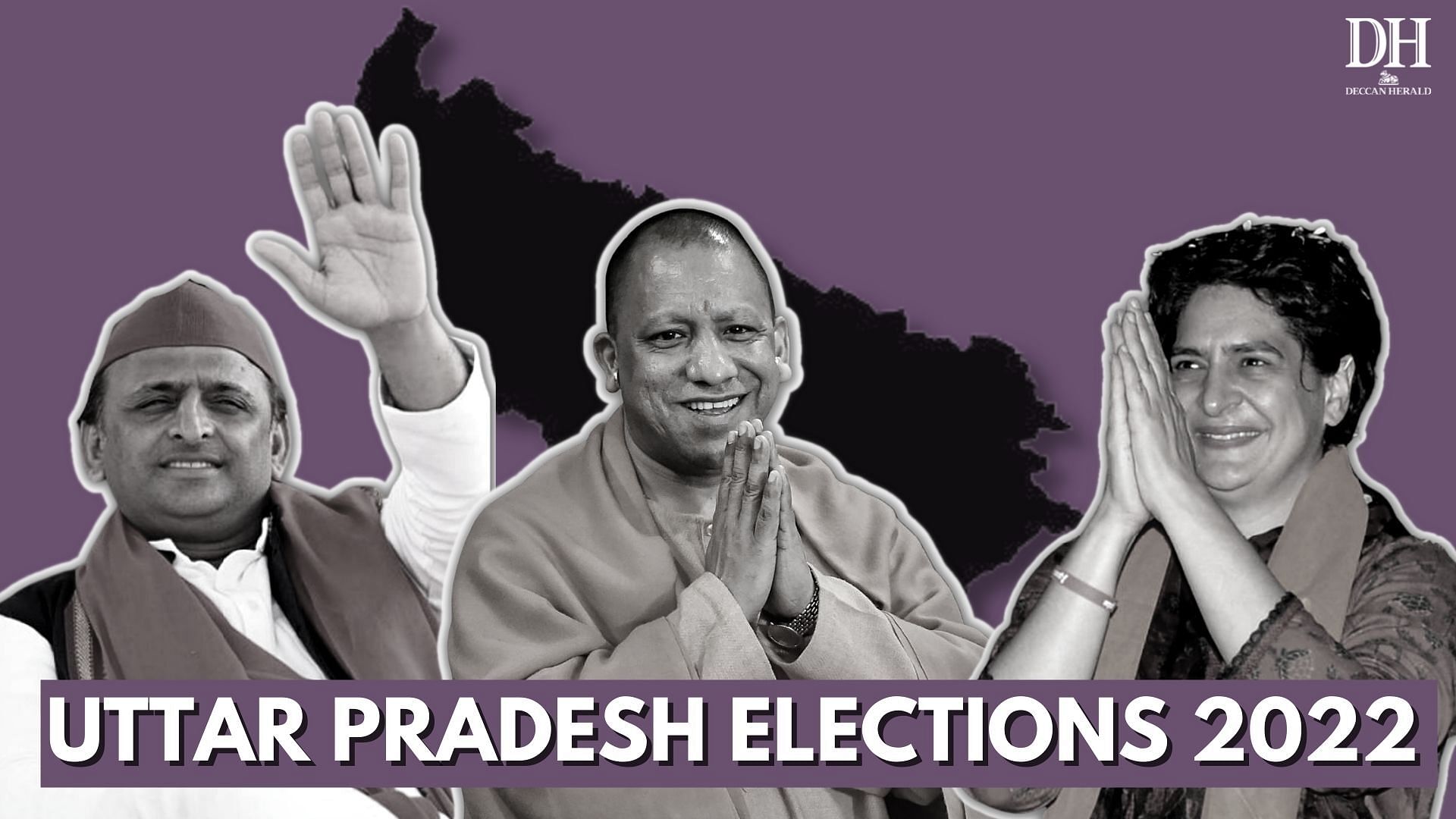
After weeks of rigorous campaigning and zingy exchanges among political parties, results to Assembly polls in the Hindi heartland state of Uttar Pradesh will be declared on March 10. Incumbent CM Yogi Adityanath will look to help BJP’s lotus bloom again in the northern state, while his main rival Samajwadi Party chief Akhilesh Yadav hopes to clinch back the CM seat.
One of the ruling Bharatiya Janata Party’s strongholds and home to Varanasi, Prime Minister Narendra Modi’s Lok Sabha seat, the state is significant in navigating the course of national politics. Here’s a look at five key factors that influence the main players in fray.
BJP’s litmus test, Yogi’s command in question
Even as most exit polls predict a comfortable victory for the saffron party in Uttar Pradesh on March 10 with the party predicted to secure over 200 seats in the 403-seat legislative assembly, many issues challenge the BJP’s standing in the state. A significant fall in the number of seats projected for the BJP or the apparent rise in popularity of its chief opponent, Akhilesh hints at resentment towards the ruling party in different parts of the state.
While the party catered to its voters, senior leaders complained of being sidelined by the high command. The saffron party was hit by an exodus of leaders and legislators, earlier this year, most of them belonging to the Other Backward Classes (OBC), which severely dented the its image. There is also dissatisfaction among the public of the state government’s handling of the Covid-19 pandemic. Issues of bad roads, daily traffic congestions in the city, inflation, unemployment and stray cattle also plague the party.
In 2017 elections, when BJP comfortably won 312 seats, it had campaigned not with Adityanath as the CM face but on the back of PM Narendra Modi’s popularity. Over the past five years, the CM has emerged as one of the party’s eminent faces, and he has also spearheaded the party’s campaigning in the state. This is, therefore, a test for Yogi who is also contesting his first ever Assembly election from Gorakhpur urban.
Mood of the nation before Lok Sabha elections
Lok Sabha elections are fast approaching when Prime Minister Narendra Modi will seek a third consecutive term, hoping to replicate his record-breaking victory in 2019. Since the state sends the most number of MPs to the lower house, elections to its legislative assembly are considered a precursor to general elections.
The results to be declared today will gauge public perception towards the BJP at the Centre.
In 2019 Lok Sabha polls, BJP swept 62 of the 80 seats, with opposition BSP and SP trailing far behind.
Opposition on its toes
The northern state is likely to see a fiery contest between Yogi Adityanath and Akhilesh Yadav. Exit polls paint a much brighter picture for Akhilesh. This can be attributed to an anti-incumbency wave in the state against Yogi. Akhilesh has also reached out to the non-Yadav OBC voter base which has voted for the BJP since 2014. SP also inducted many influential members of BJP, Congress and BSP for the polls including Swami Prasad Maurya and Imran Masood, which are sure to help the party’s prospects.
The polls do not see Congress breaking ground in the northern state. Despite an expansive campaign run by the grand old party headed by Priyanka Gandhi Vadra, especially focussing on women and farmers, polls predict a weak performance by Congress in the UP assembly.
As TMC chief Mamata Banerjee, who defeated BJP in the West Bengal elections last year, extended support to SP and campaigned in the state for him, there is indication of a bigger Opposition front being built against the BJP at the Centre.
Shadow of a pandemic
The Covid-19 pandemic struck anew in January when the Omicron variant spread across the country, taking daily cases well over 4 lakh, even if it was milder than the Delta variant of the infamous second wave. This was at the height of campaigning, prompting the Election Commission to ban massive rallies and in-person campaigning. BJP leaders, including Prime Minister Narendra Modi, resorted to online rallies and webinars to reach out to voters.
It will be interesting to see how parties fared in reaching out to people via virtual campaigning. The BJP had a slight edge over the other parties in this regard. Not only was BJP one of the only parties to adopt social media during its campaigning before 2014 Lok Sabha polls, it has diversified its digital footprint to a large extent since then. The party already has more than 1.5 lakh booth level WhatsApp groups in the state, which were used for virtual rallies.
It set up war rooms for local campaigns and its teams connected with voters through social media platforms like Facebook, Twitter, WhatsApp, Instagram, among others.
Check out DH's latest videos